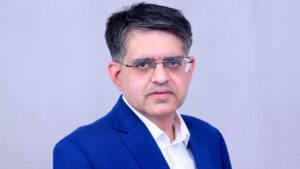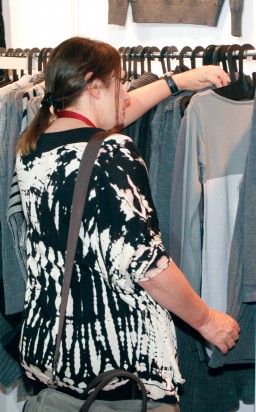
In what can be termed as a show of strength, the Indian textile chain from fibre to fashion was on display for international buyers recently at the first ever comprehensive and composite fair to showcase the entire value chain in textiles – Tex-Trends India 2011 in New Delhi. Conceptualized by the Ministry of Textiles and implemented through the support of 11 industry councils with AEPC as lead council, the event saw over 2000 buyers interacting with 800 exhibitors under various categories including home décor and fashion accessories. The fair has been positioned like the Canton Fair in China with the aim to give buyers complete product range from the diverse offerings that India has in different corners of the country as well as from both the organized sector and the unorganized handcraft and handloom industry.
At the garment section of the fair, the products on display were predominantly women’s wear with focus on dresses. Prints by way of varied applications from screen printing to digital printing, tie&dye with ombre effect, use of different fabric types on a single garment, lace designs, surface embellishments with stones and beads and combination of techniques like prints with embroidery were commonly used. It was heartening to see many exporters displaying products in line with international trends giving greater creditability to the fair.
Earlier buyers had limited choice in terms of fabric but at Tex-Trends exhibitors presented a wide range in cotton, organic cotton, blends, viscose, polyester, linen, georgette, viol, wool and silk. The garment displays were creatively supported by accessories like bags and stoles, which were highly appreciated by the buyers. “As small buyers we want to source from fewer companies and the fact that exporters are now offering a complete look is very satisfying as we can source many products from one exporter,” said Alvaro Perez Cervera, who buys for stores in Spain and Portugal.
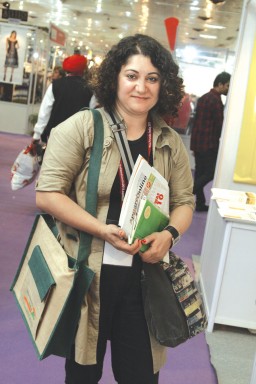
The growing presence of knitwear at the garment section, most of whom are regular participants of IIGF, was noticeable. Bubble Gum, a company specializing in knits was showcasing hot fix stones on knit dresses and sweaters, in line with the Swarovski and stone trends forecasted for 2011. The collection had a range of specialized boutique pieces and heavily embellished pieces which are not possible in other countries like Bangladesh and China in bulk, and in the required quality, there India has an edge over such pieces. Having been a participant to the IIGF for the past 5 to 6 years Hansveer Sahni, Director, Bubble Gum was happy to see more players this time displaying knits. “With more exporters in knitwear exhibiting, we can now expect more buyers for the same, which will surely bring in more business,” he said.
Another player with differential offering in knits was Karma Exports. With 99% exports in knits, the company showcased knits with various treatments like dirty dye and stone wash. They also used knits in combinations with other fabrics like lace, silk, angora fabric and polyester, which are all considered as value additions to the garment in order to set the mood of the garment to a higher level, suited for more evening and formal occasions.
Yet another noticeable trend that augurs well for the industry was the increased number of companies that were proudly displaying certifications like WRAP, which were earlier considered more appropriate for bigger exporters as they worked with larger retailers.
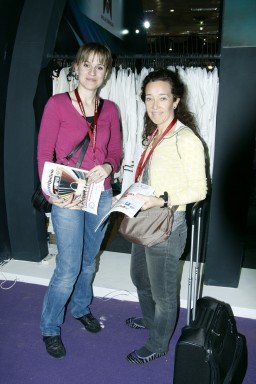
Companies from Jaipur like Cheer Sagar, Kiran Modes and Ahuja Overseas prominently had the WRAP logo imprinted on the walls of their stall. Susan Mather, a Senior Garment Technologist and Compliance Manager of Whispering Smith, a UK-based firm that sources huge volumes from India, was happy that now even small and medium-sized players were getting their factories audited. “As buyers we are working hard on compliance and increasingly more and more exporters are becoming conscious about the advantages of adhering to compliance norms, but still a lot needs to be done at various fronts,” says Susan.
Although price points were a matter of discussion many buyers admitted that India was currently competitive with other manufacturing countries in Asia. Dinesh Chaudhry, President, Sterling Arts (a division of Chaudhary Bros. Inc.), Atlanta, US, was vocal in his support to hike prices. “Indian exporters should ask for more money from the buyers. Most of the boutique/store buyers are sourcing at say 40 rupees and selling it at 40 dollars. India is very advance in design and quality so Indian exporters should be stricter in demanding on higher FOBs,” he said.
Exporters working in the high-end segment of the market are more inclined to raise their FOBs. “We have no other way to survive apart from higher FOB as margins are extremely low and it is becoming unviable to work at previous price points,” says Anju Gupta of Nipun Embroidery, a Delhi-based exporter of high fashion garments. There were many other exporters for whom price is not a problem. Rimpu, Director of Neelima International, who was participating after six years in any fair, came with 100 new styles. “Today most buyers are ready to pay our price, they are not bargaining. Of course it helps that we have a small set-up of almost 200 machines so we have less overhead and are able to offer competitive price,” said Rimpu.
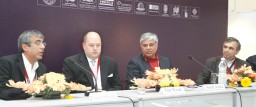
Many buyers were unhappy that kidswear were available with only a few exporters. “We are in the country specifically looking for kidswear, but there are not enough exporters for kidswear to make it worthwhile,” said Veronica Mues, Purchasing Manager, Tuctuc, La Rioja (Spain). The disappointment was greater because India is growing as a hub for children’s wear and more and more buyers are seeking options in the category. Reyhan Yalhi, Country Manager – China, Caf Konfeksiyon, Turkey, was on her first visit to India looking for kidswear. Even within the limited stalls displaying kidswear, Reyhan was satisfied with some collections. “As cotton fabric is prime requirement for kidswear, India is increasingly becoming a preferred destination in this category and some exporters have displayed a good variety of products in kidswear,” she said. The company has 350 shops in Europe and some stores in Turkey also.
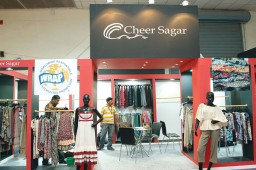
To the delight of the exhibitors many new buyers were spotted at the fair. “We made special efforts to get new buyers and 90% of the funds spent on inviting the buyers were done on new buyers,” says Lalit Thukral, MD, Maharana of India and convener IIGF, which was responsible for the garment segment of Tex-Trends 2011. In all, around 1250 foreign buyers and 3500 buying agents visited the garment segment of the fair.
Seminars Add Value…
The fair also saw two very interesting seminars, one on ‘Key Sourcing Challenges from a Buyer’s perspective’ and the second on ‘Hedging of Currency Risk’. The first seminar, moderated by Gautam Nair, MD, Matrix Clothing saw Trip Wood, MD, Target Sourcing Services, Yogesh Khurana, GAP India and Sunil Arora, Impulse talk about concerns as a buyer specific to India sourcing. While Trip Wood admitted that buyers were not vacating China voluntarily, situations at the ground have compelled them to seek options. “The time is ripe for India to implement the changes in the mindset to attract bigger buying… the decision has to be taken now,” he said. Yogesh added, “India does not need a strategy to grow by default because China may lose business, but if we are looking at increasing business sustainably then a strategy has to be put in place.”
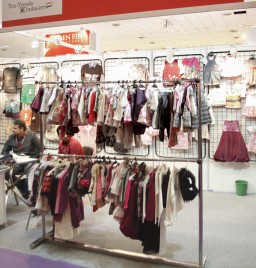
Besides issues like quality product delivered at the right time and at the right price, consistency of performance day after day was identified as a concern. Among the biggest challenges today according to the buyers is finding the right vendor with required capacities, which is a major hindrance to growth. Yogesh also pointed out that the acute shortage of labour that the industry was facing needed to be addressed in a long-term spectrum, which included skill development and new manufacturing bases where labour are in abundance. Gautam Nair apprised the gathering of the efforts by AEPC in both directions including a move to create an apparel city in Bhiwadi, Rajasthan with all necessary infrastructures to not only support production but also facilitate buyer visitation.
Highlighting the European perspective, Sunil Arora noted that initially European buyers never looked at India as a strategic sourcing base and treated it like a transaction base to fill gaps in sourcing with small quantities. “But in the last 3-4 years there has been a shift in the approach and European buyers were now strategically planning investments in India and are more committed to build business from the country,” he said.
All the speakers agreed that India had the most reliable supply chain from spinning onwards to grow in the long-term and was not dependent on orders shifting from China for business.
The second seminar on ‘Hedging of Currency Risk’ had speakers from the National Stock Exchange and Master Capital Services talk about how exporters could hedge their risk through currency derivatives introduced by NSE. While Harjeet Singh Arora, MD, Master Trust explained how they could guide exporters in hedging their risk, Sukrit Chadha from NSE detailed the process of currency derivatives and advantages that could be availed.




